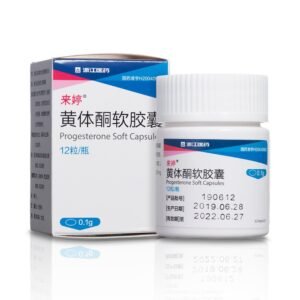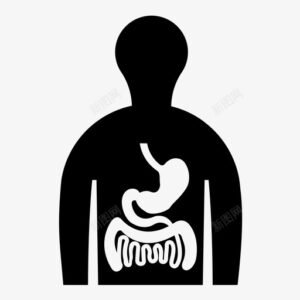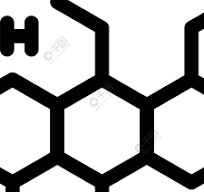أقراص دابوكستين هيدروكلوريد
وظيفة:
هذا المنتج مناسب لعلاج سرعة القذف (PE) لدى المرضى الذكور الذين تتراوح أعمارهم بين 18 إلى 64 عامًا والذين تنطبق عليهم جميع الشروط التالية: يحدث القضيب بشكل مستمر قبل أو أثناء أو بعد فترة قصيرة من الإدخال المهبلي، وقبل الحصول على الرضا الجنسي بسبب الحد الأدنى من القذف. التحفيز الجنسي أو القذف المتكرر. ضائقة شخصية كبيرة أو ضعف في العلاقات الشخصية بسبب سرعة القذف (PE). ضعف التحكم في القذف.
الجرعة:
شفوي. يجب ابتلاع الأقراص كاملة. يمكن تناول هذا المنتج قبل أو بعد الوجبات. من المستحسن أن يتناول المرضى أدويتهم مع كوب كامل من الماء على الأقل. يجب على المرضى محاولة تجنب الإصابات الناجمة عن الأعراض البادرية مثل الإغماء أو الدوخة. الذكور البالغين (18 إلى 64 سنة): الجرعة الأولية الموصى بها لجميع المرضى هي 30 ملغ، تؤخذ حوالي 1 إلى 3 ساعات قبل الجماع. إذا كان التأثير بعد تناول 30 ملغ غير مرضٍ وكانت الآثار الجانبية لا تزال ضمن النطاق المقبول، فيمكن زيادة الجرعة إلى الجرعة القصوى الموصى بها وهي 60 ملغ. الحد الأقصى الموصى به لتكرار الجرعة هو مرة واحدة كل 24 ساعة. إذا اختار الأطباء استخدام هذا المنتج لعلاج سرعة القذف، فيجب عليهم تقييم المخاطر والفوائد التي أبلغ عنها المريض خلال الأسابيع الأربعة الأولى من العلاج بهذا المنتج، أو بعد 6 جرعات علاجية، وتقييم توازن المخاطر والفوائد للمريض وتحديد ما إذا كان سيتعين عليه استخدام هذا المنتج أم لا. استمر في العلاج بهذا المنتج. كبار السن (65 عامًا فما فوق): لم يتم تقييم سلامة وفعالية هذا المنتج في المرضى الذين تبلغ أعمارهم 65 عامًا فما فوق في المقام الأول لأن البيانات المتعلقة باستخدامه في هذه الفئة من السكان محدودة للغاية. الأطفال والمراهقين: هذا المنتج غير مخصص للاستخدام من قبل الأشخاص الذين تقل أعمارهم عن 18 عامًا. المرضى الذين يعانون من قصور كلوي: المرضى الذين يعانون من قصور كلوي خفيف أو متوسط لا يحتاجون إلى تعديل الجرعة ولكن يجب عليهم توخي الحذر. لا ينصح باستخدام هذا المنتج للمرضى الذين يعانون من قصور كلوي حاد.
ردود الفعل السلبية:
تبلغ الفعالية الإجمالية لأقراص دابوكستين هيدروكلوريد 98٪. وتشمل التفاعلات الدوائية الضارة الأكثر شيوعا الصداع، والدوخة، والغثيان، والإسهال، والأرق والتعب، ولكن هذه الآثار الجانبية مؤقتة وسوف تختفي قريبا. يمكن تناوله من قبل المرضى الذين يعانون من ارتفاع ضغط الدم وأمراض القلب.
موانع المخدرات:
يمنع استخدامه عند الأطفال في حالة وجود حساسية لهذا المنتج يمنع استخدامه عند الأطفال الذين يعانون من اختلال وظائف الكلى يمنع استخدامه عند المرضى الذين يعانون من اختلال وظائف الكبد
Traits
This product is a gray film-coated tablet that appears white or off-white after the coating is removed.
Indications
This product is suitable for the treatment of premature ejaculation (PE) in male patients aged 18 to 64 who meet all of the following conditions:
Sustained or repeated ejaculation with minimal sexual stimulation before, during, or shortly after vaginal penetration and without sexual satisfaction; and significant personal distress due to premature ejaculation (PE) or Interpersonal communication difficulties; and poor ejaculation control.
Specification
30mg, 60mg (calculated as C21H23N0).
Dosage
1. Take orally. Tablets should be swallowed whole. It is recommended that patients take their medications with at least a full glass of water. Patients should try to avoid injuries caused by prodromal symptoms such as syncope or dizziness.
2. Adult males (18 to 64 years old)
The recommended initial dose for all patients is 30 mg, taken approximately 1 to 3 hours before sexual intercourse. If the effect after taking 30 mg is not satisfactory and the side effects are still within the acceptable range, the dosage can be increased to the maximum recommended dose of 60 mg. The recommended maximum dosage frequency is once every 24 hours.
This product may be taken before or after a meal (see Pharmacokinetics section).
If physicians choose to use this product to treat premature ejaculation, they should evaluate the risks and patient-reported benefits during the first 4 weeks of treatment with this product, or after 6 treatment doses, evaluate the patient’s risk-benefit balance and decide whether to continue treatment with this product.
3. Senior citizens (65 years and above)
The safety and efficacy of this product have not been evaluated in patients 65 years of age and older, primarily because data on its use in this population are extremely limited (see Pharmacokinetics section).
4. Children and teenagers
This product is not for use by people under 18 years of age.
5. Patients with kidney damage
Patients with mild or moderate renal impairment do not require dose adjustments but should use caution. This product is not recommended for use in patients with severe renal impairment (see Pharmacokinetics section).
6. Patients with liver damage
No dose adjustment is required in patients with mild hepatic impairment; use of this product in patients with moderate and severe hepatic impairment (Child-pugh Class C) is contraindicated (see Pharmacokinetics section).
Adverse reactions
clinical trial data
The safety of this product was evaluated in 6081 patients with premature ejaculation who participated in five double-blind, placebo-controlled clinical trials. Of these evaluations, 4222 patients received this product. , of which 1,615 patients received 30 mg of this product as needed, and 2,607 patients received 60 mg of this product, either as needed or once a day.
Syncope (characterized by loss of consciousness) has been reported in clinical trials and is believed to be drug related. Most cases occur within 3 hours of dosing, after the first dose or during study-related procedures performed in the clinic (such as drawing blood, standing upright, and measuring blood pressure), and are often preceded by syncope. Prodromal symptoms.
Orthostatic hypotension has been reported in clinical trials
The most common (≥5%) adverse drug reactions in clinical trials included headache, dizziness, nausea, diarrhea, insomnia, and fatigue. The most common events leading to discontinuation included nausea (2.2% of subjects treated with EGFR) and dizziness (1.2% of subjects treated with EGFR).
Table 1 lists adverse drug reactions that occurred in ≥1% of subjects treated with this product in these trials.
Taboo
This product is contraindicated in patients with known allergies to dapoxetine hydrochloride or any excipients.
This product is contraindicated in patients with significant pathological conditions of the heart [e.g., heart failure (NYHA Classes II-IV), conduction abnormalities not treated with a permanent pacemaker (Grade 2 or 3 AV block, or sick sinus syndrome). signs), significant myocardial ischemia and valvular disease]
This product cannot be used together with monoamine oxidase inhibitors (MAOIs) or within 14 days after stopping treatment with MAOIs. Likewise, MAO inhibitors should not be used within 7 days of stopping Priligy (see Drug Interactions section).
This product cannot be used together with thioridazine or within 14 days after stopping thioridazine treatment. Likewise, thioridazine should not be taken within 7 days of stopping Priligy (see Drug Interactions section).
This product is contraindicated in the concurrent use of ketoconazole, itraconazole, ritonavir, saquinavir, telithromycin, nefazodone, nafinavir, atazanavir and other strong cytochrome P450 3A4 inhibitors. patients.
This product is contraindicated in patients with moderate and severe liver impairment.
Precautions
Using Priligy may cause fainting or dizziness.
–If a patient develops a possible prodromal symptom, he or she should immediately lie down with the head lower than the rest of the body, or sit down with the head between the knees until the symptoms subside.
Patients should be warned to avoid situations that may result in injury if syncope or other central nervous system (CNS) effects occur, including driving or operating hazardous machinery.
The simultaneous use of this product with alcohol may aggravate alcohol-related neurological effects, and may also aggravate adverse reactions on the neurocardiovascular system (such as syncope), thereby increasing the risk of accidental injury; therefore, patients are advised to avoid Taking alcohol.
See instructions for details.
Medication for pregnant and lactating women
Women are not suitable to use this product.
pregnancy
No evidence of teratogenicity, embryotoxicity, or fetotoxicity was found in rats or rabbits receiving doses up to 100 mg/kg (rat) or 75 mg/kg (rabbit). Based on the limited observational data currently available from clinical trial databases, there is no evidence that dapoxetine administration affects maternal pregnancy. There have been no sufficiently large and well-controlled studies in pregnant women.
breast-feeding
It is unknown whether dapoxetine or its metabolites are excreted in human milk.
Medication for children
This product should not be used by people under 18 years of age.
Medication for the Elderly
The safety and efficacy of this product in patients 65 years of age and older have not been evaluated, primarily because there are extremely limited data on its use in this population.
Analysis of single-dose clinical pharmacology studies using 60 mg of dapoxetine hydrochloride showed no significant differences in pharmacokinetic parameters (Cmax, AUCinf, Tmax) between healthy older men and healthy younger men.
medicine interactions
Possibility of interaction with monoamine oxidase inhibitor oxidase
Serious (sometimes fatal) reactions have been reported in patients taking a selective serotonin reuptake inhibitor concomitantly with a monoamine oxidase inhibitor (MAOI), including hyperthermia, rigidity, myoclonus, autonomic Neurological instability with possible rapid fluctuations in vital signs and changes in mental status, including hyperarousal and progression to delirium and coma, after recent discontinuation of a selective serotonin reuptake inhibitor and initiation of a monoamine oxidase inhibitor These reactions have also been reported in patients treated with neuroleptics, with some cases exhibiting features similar to neuroleptic malignant syndrome. 1. Possibility of interaction with monoamine oxidase inhibitors Serious (sometimes fatal) reactions have been reported in patients taking a selective serotonin reuptake inhibitor plus a monoamine oxidase inhibitor (MAOI) simultaneously. Reportedly, these reactions include hyperthermia, rigidity, myoclonus, autonomic instability with possible rapid fluctuations in vital signs, and changes in mental status, including hyperarousal and progression to delirium and coma. These reactions have also been reported in patients who recently discontinued a selective serotonin reuptake inhibitor and started a monoamine oxidase inhibitor. Some cases exhibit features similar to neuromuscular blocker malignant syndrome. Tests of combinations of selective serotonin reuptake inhibitors and monoamine oxidase inhibitors in animal models have shown that these drugs may have synergistic effects in increasing blood pressure and inducing behavioral arousal. Therefore, this product cannot be used in combination with monoamine oxidase inhibitors. Nor should it be used within 14 days of stopping monoamine oxidase inhibitors. Likewise, monoamine oxidase inhibitors should not be used within 7 days of discontinuing this product. (see contraindications section)
2. Possibility of interaction with thioridazine
Thioridazine alone can prolong the QTc interval, which is associated with severe ventricular arrhythmias. Some drugs that inhibit the cytochrome P450 2D6 isoenzyme, such as Priligin, can inhibit the metabolism of thioridazine and lead to an increase in thioridazine concentrations, which will increase the prolongation of the QTc interval.
This product cannot be used in combination with thioridazine or within 14 days of stopping thioridazine. Likewise, thioridazine should not be used within 7 days of discontinuing this product. (see contraindications section)
3. Drugs/herbal medicines with serotonin effect
Like other selective serotonin reuptake inhibitors, Priligin is compatible with drugs/herbal medicines that have serotonin effects (including monoamine oxidase inhibitors, L-tryptophan, triptans, tramadol, linezolid, The combined use of selective serotonin reuptake inhibitors, serotonin-norepinephrine reuptake inhibitors, lithium, and Hypericum perforatum extract (Hypericum perforatum) may result in serotonin effects. This product cannot be used in combination with other selective serotonin reuptake inhibitors, monoamine oxidase inhibitors or other drugs/herbal medicines with serotonin-related effects. They should not be used within 14 days of stopping use of these medicines/herbal medicines. Likewise, these medicines/herbal medicines should not be taken within 7 days of stopping taking this product. (see contraindications section)
Central nervous system active drugs
The use of this product in combination with CNS-active drugs has not been systematically evaluated in patients with premature ejaculation, so if concomitant use of this product with such drugs is necessary, treat the patient with caution.
Effects of combined drugs on dapoxetine
In vitro studies in human liver, kidney, and intestinal microsomes have shown that dapoxetine is primarily metabolized by cytochrome P450 2D6, cytochrome P450 3A4, and flavin monooxygenase 1 (FMO1), so inhibitors of these enzymes may Decreased clearance of dapoxetine.
Potent cytochrome P450 3A4 inhibitor
Ketoconazole (200 mg twice daily for 7 days) increased the CMAX and AUCINF of dapoxetine (60 mg as a single dose) by 35% and 99%, respectively. Taking into account the effects of free dapoxetine and desmethyl dapoxetine, if taking a strong CYP3A4 inhibitor, the maximum plasma concentration of the active moiety (the sum of free dapoxetine and desmethyl dapoxetine) The concentration may
Increased by about 25%, AUC may double. Such an increase will be obvious in some patients, mainly including those who lack the functional enzyme of cytochrome CYP2D6, that is, poor metabolizers of cytochrome CYP2D6 or who are combined with strong inhibitors of cytochrome P2D6. patient.
Therefore, this product is contraindicated in patients taking ketoconazole, itraconazole, ritonavir, saquinavir, telithromycin, nefazodone, nafinavir, atazanavir, etc. at the same time.
Moderate cytochrome P450 3A4 inhibitor
Concomitant use of moderate cytochrome P450 3A4 inhibitors, such as erythromycin, clarithromycin, fluconazole, amprenavir, flasanavir, aprepitant, verapamil, and diltiazem, may also increase Exposure to dapoxetine and desmethyldapoxetine, particularly in poor metabolizers of cytochrome CYP2D6. Therefore, when combined with any of the above drugs, the maximum dose of this product is limited to 30 mg, and caution is recommended.
drug overdose
There were no reports of overdose during clinical trials. In clinical pharmacology studies with doses of up to 240 mg per day (two 120 mg doses separated by 3 hours), no unexpected adverse events occurred. In general, symptoms of overdose with selective serotonin reuptake inhibitors include serotonin-mediated adverse effects such as drowsiness, gastrointestinal disturbances such as nausea and vomiting, tachycardia, tremor, agitation, and dizziness. In the event of overdose, standard supportive measures should be implemented as needed. Due to the high protein binding and large volume of distribution of dapoxetine hydrochloride, intensive diuretic, dialysis, hemoperfusion, and exchange transfusion therapy are unlikely to be effective. There is currently no specific antidote for this product.
Clinical Trials
The efficacy of this product in treating premature ejaculation has been proven in 5 double-blind, placebo-controlled clinical trials. There were a total of 6081 randomized subjects in these 5 trials. Subjects were aged 18 years and above and had experienced premature ejaculation during most sexual encounters within the 6 months prior to enrollment. In four of the studies, participants had an intravaginal ejaculation latency time (IELT: time from vaginal insertion to intravaginal ejaculation) of <2 minutes in at least 75% of evaluable sexual events during the baseline period. In study 5, subjects had the same inclusion criteria, however, IELT was not measured using a stopwatch. All studies excluded participants who had other forms of sexual dysfunction (including erectile dysfunction) or who were using other forms of medication for premature ejaculation. In 4 of the studies, the primary endpoint (mean intravaginal ejaculation latency) was measured during demagnetization using a stopwatch. The results were consistent across all randomized studies. In a representative study with the longest treatment period (24 weeks), a total of 1162 subjects were randomized, of which 385 subjects received placebo, 386 subjects received the 30 mg dose of this product as needed, and 385 subjects received placebo. 389 patients need to receive the 60 mg dose of this product. Figure 1 shows the mean intravaginal ejaculation latency for all treatment groups at baseline and study endpoint. Compared with the placebo group, the mean intravaginal ejaculation latency increase at the 24-week end point was statistically significant for both treatment doses of this product (p<0.001). The magnitude of prolongation of intravaginal ejaculation latency is related to baseline intravaginal ejaculation latency and varies between subjects. The following patient-reported response rates describe the clinical significance of treatment with this product.
In addition to the primary endpoint (mean intravaginal ejaculation latency), meaningful treatment benefit for patients in the above studies was demonstrated using a definition of treatment response that included at least a 2-point increase in ejaculation control and at least a decrease in ejaculation distress. 1 point. The percentage of subjects in remission from week 4 up to and including week 24 was significantly higher in each arm than in the placebo group (p=0.003 for dapoxetine 30 mg vs. placebo at week 16, all other Comparison p value ≤ 0.001). A significant decrease in subjects’ distress and a significant increase in subjects’ satisfaction with their sexual lives were also observed.
Improvements in key secondary endpoints at weeks 12 and 24 are presented in Table 3.
The p-value for this product compared to placebo is <0.001: LPOCF refers to the last post-baseline observation carried forward
Other secondary reported outcome (PRO) endpoints evaluated in clinical trials include the clinical composite impression of change (CGIC, a common method used by patients to assess their condition). The researchers asked patients to compare their symptoms of premature ejaculation from the start of the study, with relief options ranging from greatly improved to significantly worsened. When tested at a significance level of 0.05 (two cases), the endpoint of clinical composite impression showed a statistically significant improvement compared with the placebo group. Table 4 presents the composite clinical impression results reported at the end of the above studies by treatment group.
In a 12-week, Asia-Pacific country-wide study, 1,067 subjects were randomly assigned to receive placebo, 357 in the as-needed treatment group, 354 in the 30 mg as-needed treatment group, and 356 in the 60 mg as-needed treatment group. Figure 2 shows the mean IELT values at baseline and study endpoint for all treatment groups. Compared with the placebo group, the mean IELT at the 12-week endpoint (LPOCF) was significantly increased in the two treatment groups (p<0.001).
In addition to the primary endpoint of mean IELT, there is a and data response to demonstrate meaningful treatment benefit for patients in the R096769-PRE-3003 study, which treatment response is determined by at least 2 categories of increase in ejaculation control and at least 1 in ejaculation-related distress. Composed of classified descent. From the first dose of IELT measurement until week 12 (including week 12), the percentage of responding patients in each group was significantly higher than that in the placebo group (p<0.001). Patients experienced a significant decrease in pain and significant improvement in sexual intercourse satisfaction. Table 5 shows the improvement of each key secondary endpoint at the 12-week endpoint.
Other secondary patient-reported endpoints (PROs) were also evaluated in the R096769-PRE-3003 study, including the Clinical Composite Impression of Change (CGIC), a universal test used by patients to assess their condition. Patients were asked to compare premature ejaculation from the start of the trial. Given the choice between substantial improvement or substantial worsening, there was a statistically significant improvement in the CGIC endpoint compared to placebo at a significance level of 0.05 (two-sided). Table 6 shows the CGIC results reported in the final treatment arm of the R096769-PRE-3003 study.
A placebo-controlled, double-blind, parallel-group study evaluated the discontinuation effect of 60 mg of this product administered daily as needed for the treatment of premature ejaculation. The study randomized 1,238 subjects. Subjects received daily or dark blood treatment with placebo or 60 mg of this product for 62 days, followed by a 7-day off-treatment evaluation period, during which subjects continued to receive this product or placebo. Use discontinuation-induced signs and symptoms (DESS, a physician-prescribed method of counseling about symptoms and signs that occur after discontinuing serotonin reuptake inhibitor therapy) to determine discontinuation effects after abrupt cessation of therapy. For each subject, discontinuation syndrome was defined weekly from days 63 to 70
Pharmacology and toxicology
The mechanism of action of dapoxetine in treating premature ejaculation may be related to its inhibition of the reabsorption of 5-hydroxytryptamine by neurons, thereby affecting the potential difference between neurotransmitters acting on pre- and post-synaptic receptors in cells.
Human ejaculation is primarily mediated by the sympathetic nervous system. The reflex pathway for ejaculation originates from the spinal reflex center, which is mediated by the brainstem, and this reflex center is initially influenced by many brain nuclei (the medial preoptic nucleus and the inferior paraventricular nucleus). In rats, dapoxetine inhibits the ejaculatory drive reflex by acting at the supraspinal level, in which the lateral paramagnocellular nucleus (LPGi) is a necessary brain structure. Postganglionic sympathetic nerve fibers that innervate the seminal vesicles, vas deferens, prostate, bulbar urethra muscles, and bladder neck can cause the above-mentioned organs to contract synergistically to achieve ejaculation. Dapoxetine can modulate this ejaculatory reflex in rats, thereby prolonging the latency of pudendal motor neuron reflex discharge (PMRD) and reducing the duration of PMRD.
Toxicological effects:
In oral administration studies in rats, dapoxetine was not anticancer when administered daily for approximately two years at doses up to 225 mg/kg/day, which produced exposures approximately The recommended human dose (MRHD) of 60 mg is twice the observed exposure (AUC) in men. In TG.rasH mice, dapoxetine did not cause tumors when administered at the maximum possible dose of 100 mg/kg for 6 months and 200 mg/kg for 4 months. The steady-state exposure of mice after oral administration of 100 mg per kilogram is less than the clinical exposure of a single dose of 60 mg.
Some tumor initiation was observed at 750 mg/kg/day or higher dose levels in Tg.AC transgenic mice after daily topical administration for 6 months at doses of 375, 750, or 1500 mg/kg/day. Sexual activity (papillomas at the site of administration). Systemic drug exposure calculated as AUC for dapoxetine and major human metabolites is approximately 1 to 2 times the exposure observed in men receiving the maximum recommended human dose (MRHD) of 60 mg. Local exposure models are not applicable to oral administration. medicine medicine.
Neither dapoxetine nor its major human metabolite was mutagenic in an in vitro bacterial Ames assay or a forward mutation assay in mouse lymphocytes, an in vitro chromosomal aberration assay in Chinese hamster ovary cells, or Dapoxetine was not teratogenic in an in vitro mouse micronucleus assay.
Pharmacokinetics
1. Absorption: After oral administration, dapoxetine is rapidly absorbed and reaches maximum plasma concentration (Cmax) approximately 1-2 hours later. Absolute bioavailability is 42% (range 15-76%). After a single oral dose of 30 mg and 60 mg dapoxetine in the fasting state, peak plasma concentrations (297 ng/ml and 498 ng/ml, respectively) were reached after 1.01 and 1.27 hours, respectively. Intake of a high-fat diet can moderately reduce the Cmax of dapoxetine (10%) and moderately increase the AUC (12%). At the same time, it can also slightly delay the time when dapoxetine reaches peak concentration; however, ingesting a high-fat diet Diet does not affect the extent of absorption. None of these changes were clinically significant. Priligin can be taken with or without meals. 2. Distribution In vitro, more than 99% of dapoxetine can bind to human serum proteins. active generation.
| Weight | 0.01 kg |
|---|---|
| Dimensions | 15 × 10 × 3 cm |


































